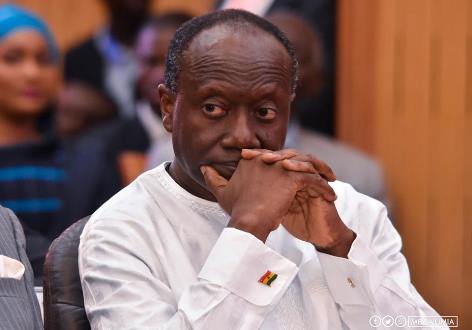
By Ernest KISSIEDU
Ghana’s debt position is about GHC16 billion worse than December 2016 levels, based on data from the Bank of Ghana (BoG).
At last week’s press meeting to conclude the latest meeting of the Monetary Policy Committee (MPC) of the BoG, central bank indicated that the total public debt at the end of June 2017 stood at GH¢138.6 billion, which is 68.6% of the gross domestic product (GDP).
This compares with a total public debt of GH¢122.6bn recorded at the end of 2016.
This means since December 2016, the nation’s debt portfolio has increased by 13.05 per cent, raising the per capita debt owed by Ghanaians (using population estimate of 29 million) from GHC4,227.58 in December 2016 to GHC4,779.31 in June 2017.
In May, 2017, the total public debt stood at GH¢137.3 billion (68.0% of GDP).
Of the total, domestic debt remained unchanged at GH¢63.9 billion while external debt was GH¢74.6 billion.
The marginal increase in the debt stock in cedi terms between May and June 2017 was due to exchange rate effects, according to an MPC statement read by BoG Governor Dr. Ernest Kwamina Yedu Addison.
Nonetheless, the outcome of the 78th MPC session showed that the economy was generally in good condition owing to positive out turns for export earnings, import cover and relative stability in foreign exchange market conditions.
According to him, global developments coupled with continued improvements in the macro fundamentals have impacted favourably on the country’s external position. “In the year to August 2017, the trade account showed that export earnings increased significantly by approximately US$3 billion from last year; on the back of increased production volumes in gold, cocoa and crude oil.
“The recovery in exports combined with an estimated US$1 billion decline in imports, resulted in a trade surplus of 2.5 per cent of GDP against a trade deficit of 4.3 per cent recorded last year. These favourable developments would help build buffers against any unanticipated shocks,” Dr. Addison explained.
For the BoG governor, in the first half of 2017, provisional estimates of the balance of payments reflected significant improvements. The trade surplus translated into a relatively favourable current account deficit of US$109 million (0.2% of GDP) in the first half compared with a deficit of US$1.2 billion (2.8% of GDP) in the same period of 2016.
Dr. Addison added that the capital and financial account also improved to US$1.3 billion (2.8% of GDP) mainly due to increased portfolio inflows from the bond issuance in April. These resulted in an overall balance of payments surplus of US$1.2 billion (2.6% of GDP) compared with a deficit of US$846 million (2% of GDP) during the same period last year.
“Foreign exchange market conditions remain relatively stable supported by improved liquidity conditions, despite some marginal demand pressures. In the year to August 2017, the Ghana cedi depreciated by 4.5 per cent against the US dollar, compared with a depreciation of 3.9 per cent in the same period of 2016.
“Gross Foreign Assets stood at US$7.1 billion, translating into 4.1 months of import cover at end August 2017, compared with US$4.9 billion (2.8 months of import cover) a year ago,” he said.
Touching on banking sector development, Dr. Addison revealed that BoG is working towards building a strong and more sophisticated banking sector backed by robust capital frameworks due to increasing risk exposures.
“In particular, BoG is introducing risk-based capital requirements under the Basel II and III framework as well as enhancing prudential regulations, governance structures of banks, and macro prudential oversight to support a stronger and more sophisticated financial system.”
The governor is convinced that the financial sector remains liquid and solvent although non-performing loans and concentration risks remain high. Total asset base of banks increased to GH¢89.1 billion in July 2017, representing an annual growth of 32.9 per cent compared to 24.6 per cent growth a year earlier.
The growth in assets was funded largely by domestic deposits which went up by 32 per cent on a year-on-year basis. The industry’s Capital Adequacy Ratio (CAR) averaged 14.3 per cent at the end of August 2017, above the 10.0 per cent statutory threshold.
Dr. Ernest Addison indicated that provisional data on fiscal operations showed a cash deficit of 4.0 per cent of GDP in the year to July 2017, against the set target of 4.1 per cent.
This outturn was on account of realized total revenue and grants of 10.3 per cent of GDP, below the target of 11.9 per cent. Total expenditures including arrears clearance, was 14.3 per cent of GDP below the budgeted estimate of 16.0 per cent.
Financing of the deficit, equivalent to 4.0 per cent of GDP was mostly from domestic sources.




























